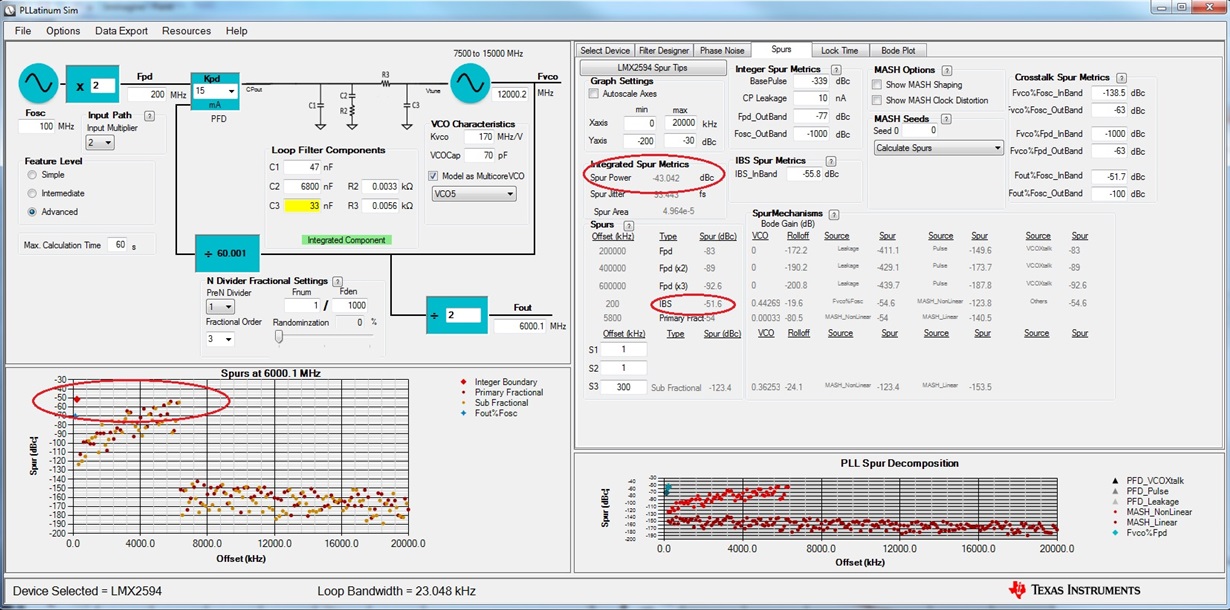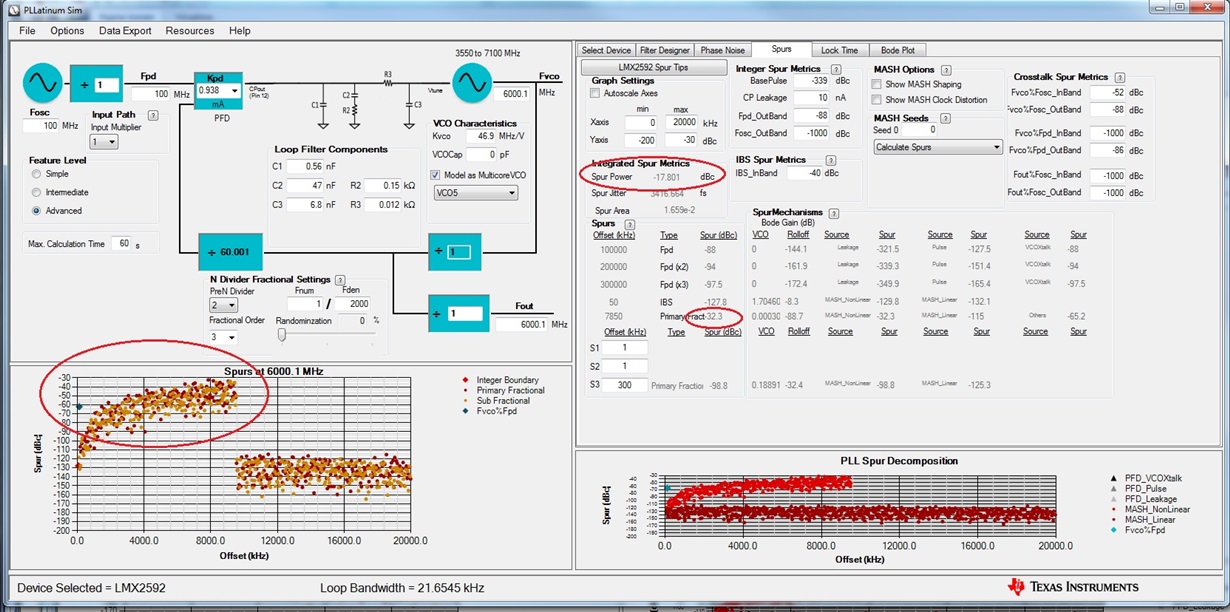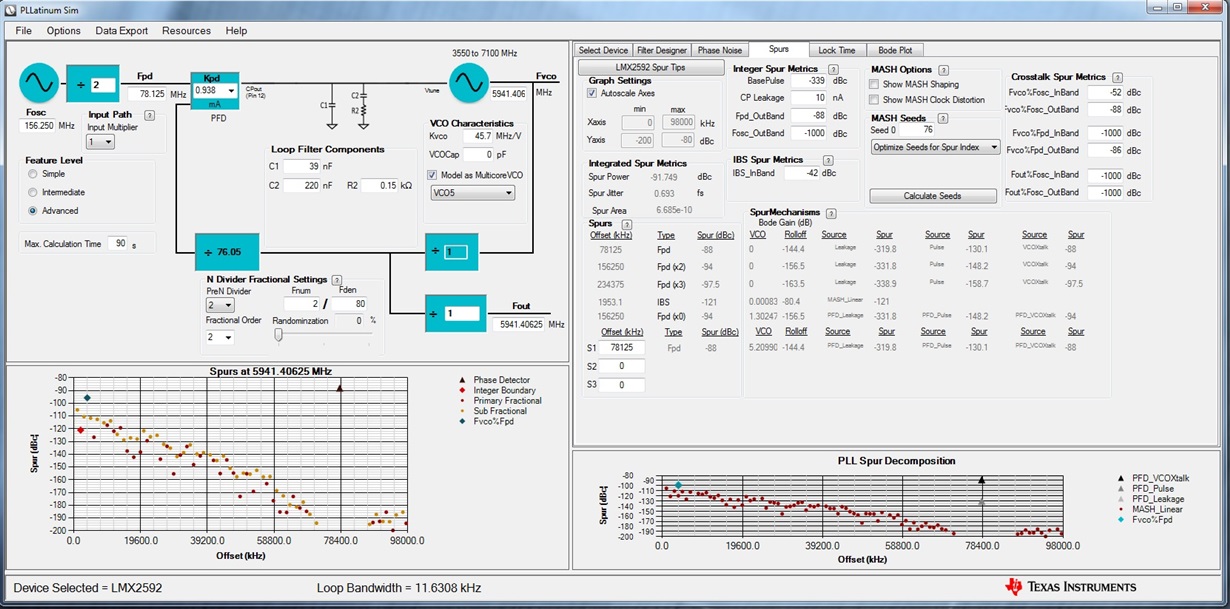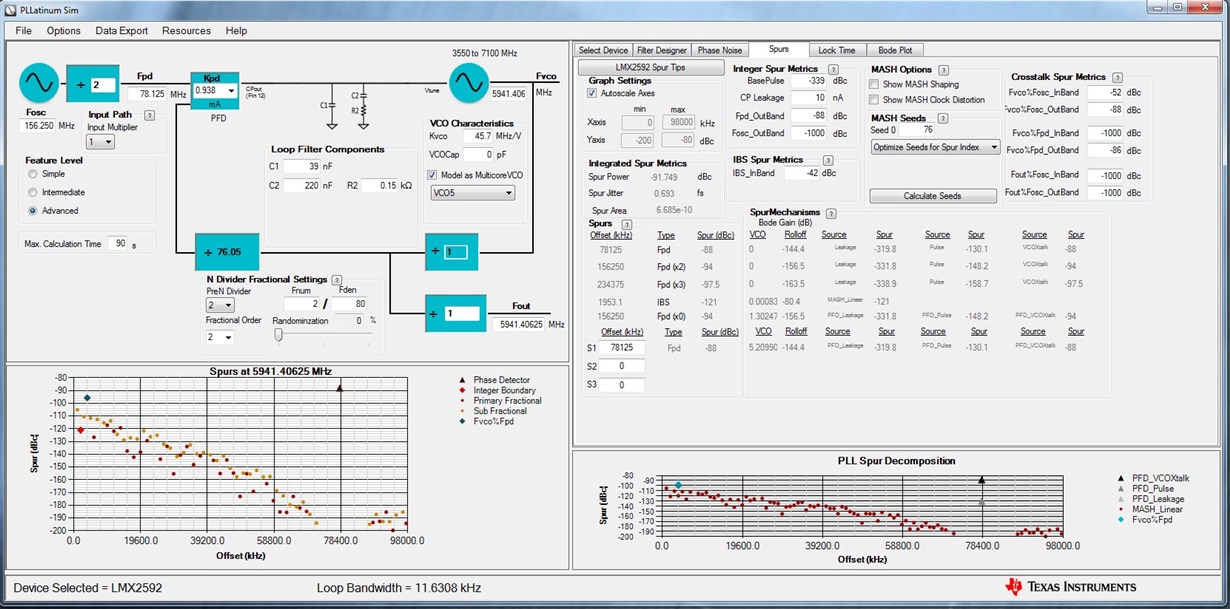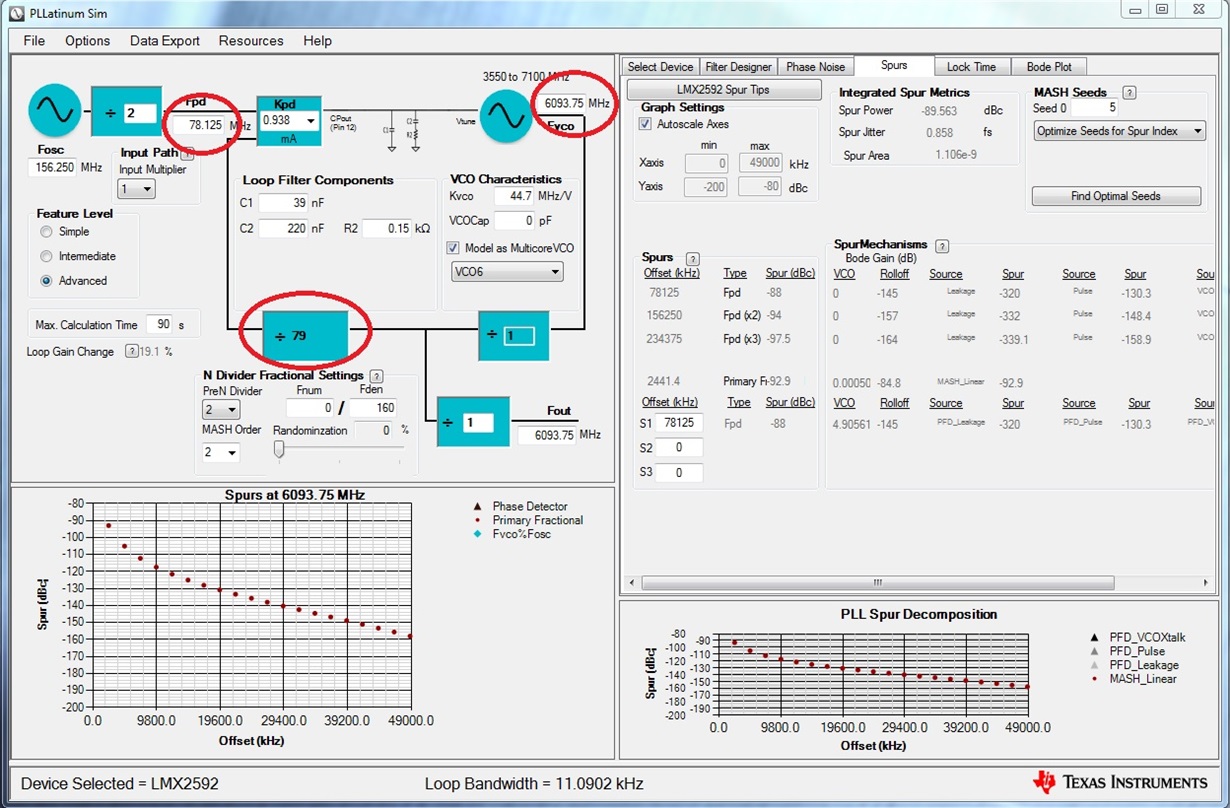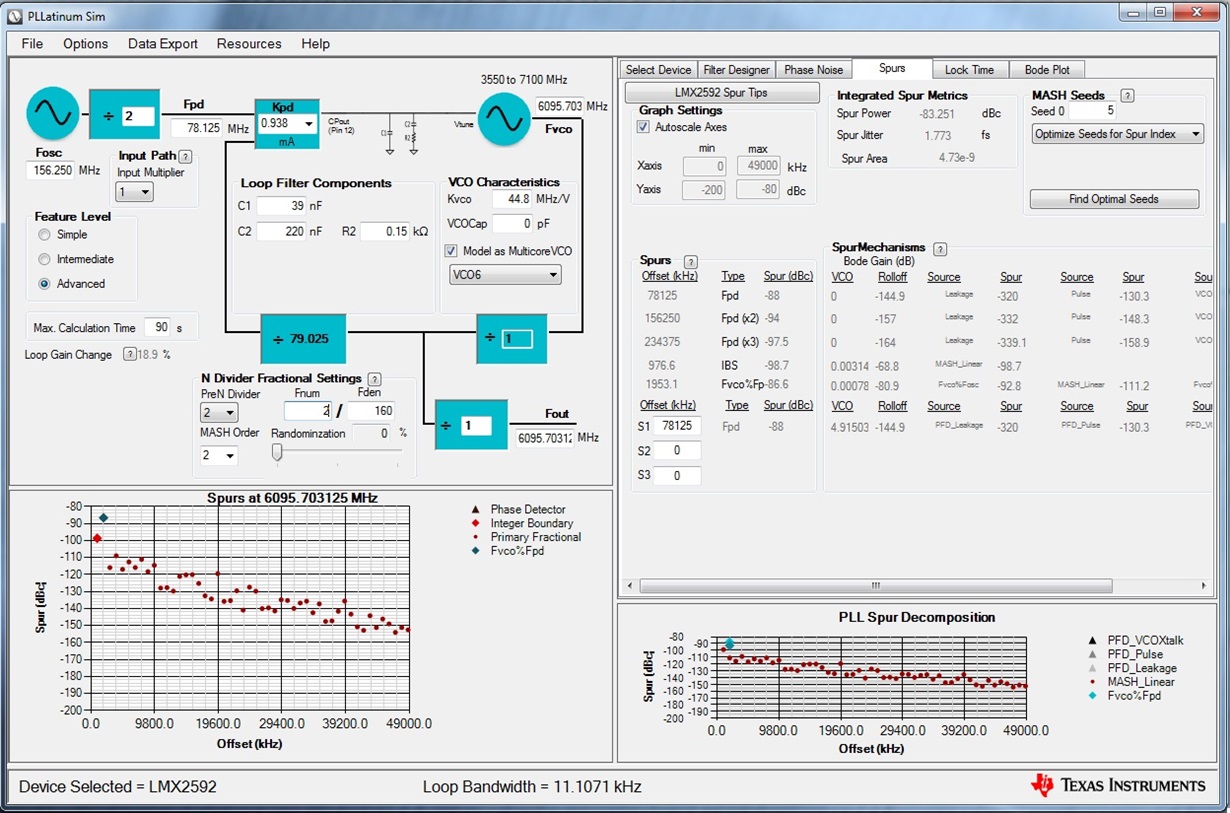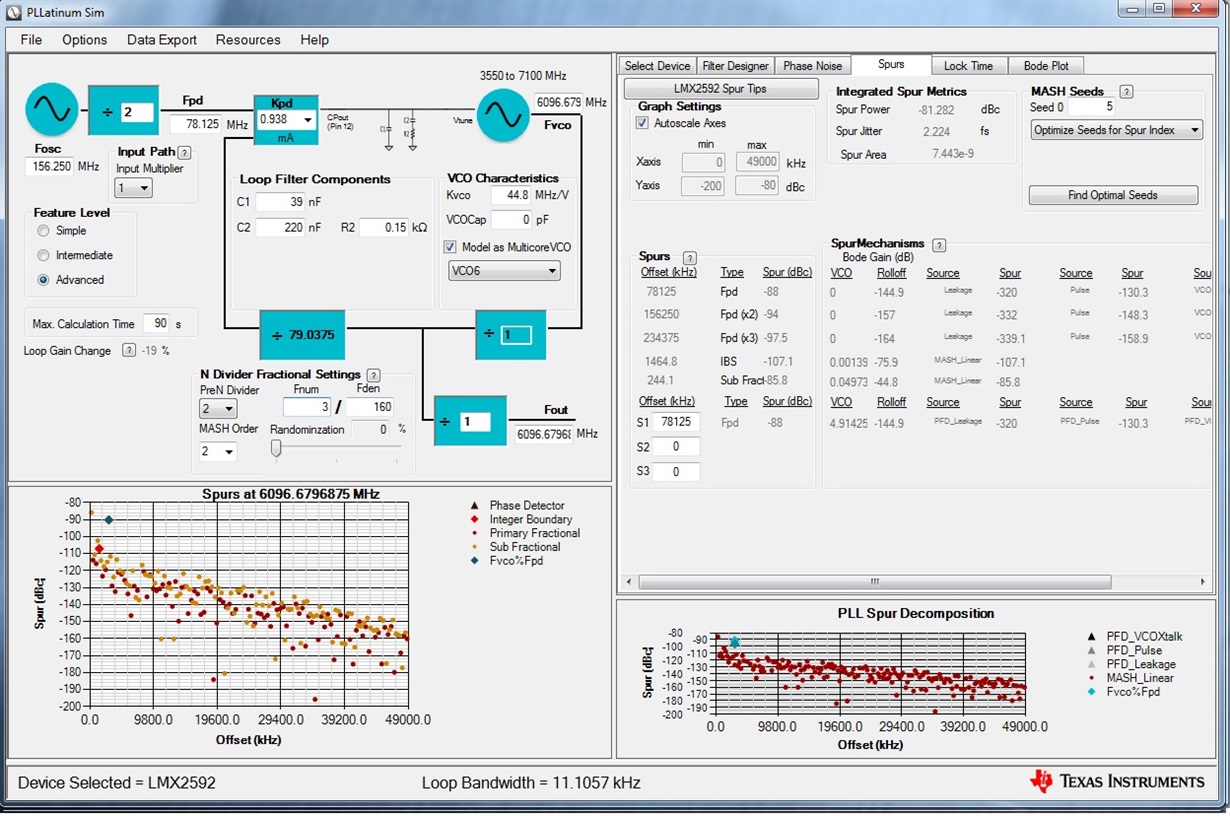Other Parts Discussed in Thread: LMX2592, , PLLATINUMSIM-SW
Hello,
We originally chose the LMX2592 for which we got the expected and acceptable specs as far as spurs are concerned. Then, as we wanted to go higher in frequency, we switch to LMX2594 apparently "bigger brother" of LMX2592. Of course the loop has been changed as well as all the other parameters in order to fit the differences. However, after many comparisons in many different situations, for most frequencies spurs were quite higher on LMX2594 being something between 10 to 15 dB worse. Also Pllatinum Sim seems somehow to confirm that. I said "seems" because there are so many parameters that can be used to have different behavior in spurs that it is almost impossible to test them in all combinations. Moreover, while LMX2592 datasheet reports a reasonable lot of data for spurs, the LMX2594 datasheet is poor in that.
Therefore, after my preamble, my simple question is: did I understand correctly that spurs in LMX2594 are worse by at least 10 dB than the LMX2592?
Thank you for any help you could give me.
Mario


